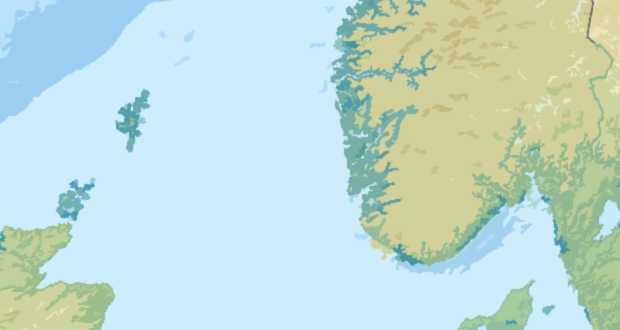Gravity-deployed carbon composite cable completes first commercial deployment offshore Norway

Ziebel, a Stavanger-based provider of specialist well intervention services for the oil and gas industry, announced that its Z-Line gravity-deployed slim carbon composite cable was used to acquire meaningful distributed temperature and distributed acoustic fiber optic data during a commercial well intervention. The tool made its inaugural run for a major operator offshore Norway.
The system accessed a platform well to a depth of 9,684 ft with standard wireline-type gravity deployment and dry sealing pressure control equipment (no grease injection). All mechanical requirements of the line functioned successfully, and high-quality distributed fiber optic data was acquired for the operator.
“We are very pleased with the Z-Line’s successful performance during its first commercial well intervention,” Ziebel CEO Stig Hognestad said. “It marks the culmination of a thorough process of development and rigorous testing by the Ziebel team. The real significance for us – and the industry – is that it proves that the system functions as intended in an actual live pressured well environment. With the success of this launch, the service is now available to all operators.”
Z-Line builds upon the proven Z-System carbon composite technology, which delivers critical decision-making well information to oil companies. The key difference between the two is that the Z-Line does so from a smaller wireline footprint, and, being gravity deployed, with a typically shorter intervention time per well.
The Z-Line is a 3/16–in. (4.8 mm) diameter carbon composite line with embedded optical fibers at its core. This enables distributed temperature sensing and distributed acoustic sensing to be performed along the full length of the line. In addition, Ziebel’s optical point pressure and temperature sensors are contained within the BHA, along with a connection to enable standard memory logging tools to be run below the BHA. The rig-up and footprint are similar to that of a standard wireline cased-hole setup, although the distributed measurement acquisition method does differ in that it is carried out with the line parked stationary in the well.
The carbon composite material enables the line to have an extremely high strength-to-weight ratio, with a breaking strength (6,600 lb/3,000 kg) in excess of what can be achieved with a similar diameter of steel wire or braided line. The smooth outer finish makes for effective sealing, and the low friction coefficient to steel plus the relative stiffness of the line gives it increased ability to reach into deviated wells. In addition, the low friction reduces the abrasion and tubing wear associated with standard wireline or slickline runs.
Applications that can be addressed with the service include:
- Well integrity, producers: annular leak detection source and fluid migration behind casing detection.
- Well integrity, injectors: verify that no unwanted injection occurs into the overburden. Decide with confidence whether remedial work is required or to resume injection.
- P&A: provide information to help optimize the number of plugs and to decide where they should be set, to determine where to safely cut casing strings and to verify wellbore integrity.
- Production optimization: determine gas lift settings required for a stable flow regime and the optimal gas injection volume/production ratio. Verify that GLVs operate in the right sequence and that dummy valves are not leaking. An optimized gas lift system can increase production by up to 15% and save gas injection costs.
Z-Line is a registered trademark of Ziebel




